The modern clown
is a sophisticated communicator
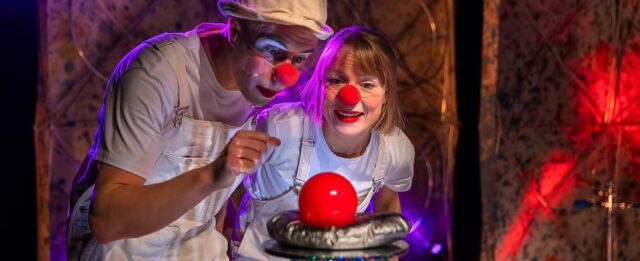
Morten Uglebjerg Norli and Anna Nerdrum Bøgwald. Photo: Kristin Aafløy Opdan
The clown plays out the age-old drama of failing - and maybe succeeding anyway. In the past, clowns were often perceived as dangerous, but since the 70s they have had a more innocent character.
The clown character often looks and acts like an outsider. With awkwardness and childlike body language, the clown character creates the perfect opportunity to empathise and break boundaries - and the audience responds with laughter.
Unleashing the essence of the clown requires a well-developed ability to connect with the audience and a sure sense of timing, as is the case with stand-up comedians today, although of course they cannot be described as clowns in the way we traditionally understand it.
We also see clowns playing a central role in the Danish hospital system and as a profession across traditional and contemporary circus. Says the head of CirkusmuseetMikkel Knudsen, who the Danish Artist Association has asked to put the development and potential of the clowning profession into perspective.
The innovative clown
Mikkel Knudsen sees several development paths for the profession, but particularly emphasises the cross-aesthetic that mixes form and genre in today's clowning profession.
"We have always had strong circus families in Denmark," he says, mentioning not only the most famous ones such as Benneweis, Schumann and Enoch, but also the Steckel family. Freddi Steckel, who is still active at the age of 74, received the honour in 2024 The Danish Circus Award for his development of the art form in Denmark. "Back then, people grew up with the circus, learnt the craft in the family and developed the acts together, and it's still like that, but to a lesser extent today, when it has become more difficult to run a circus," says Mikkel Knudsen and continues:
"We still have traditional circus clowns with roots in the classic clown acts, but there are also more innovative clowns. I can point to the award-winning Danish-Finnish clown couple BonBon & Tiina, whose repertoire includes a badminton and a carillon act, the multi-artist Alexander Arli from Circus Arli, who has also appeared in a number of revues and - albeit as a tap dancer - in Lars von Trier's Dancer in the Dark, and Søren Østergaard's reimagined clown characters in Zirkus Nemo. The common denominator is that they take classic clown characters and make them their own with high quality execution."
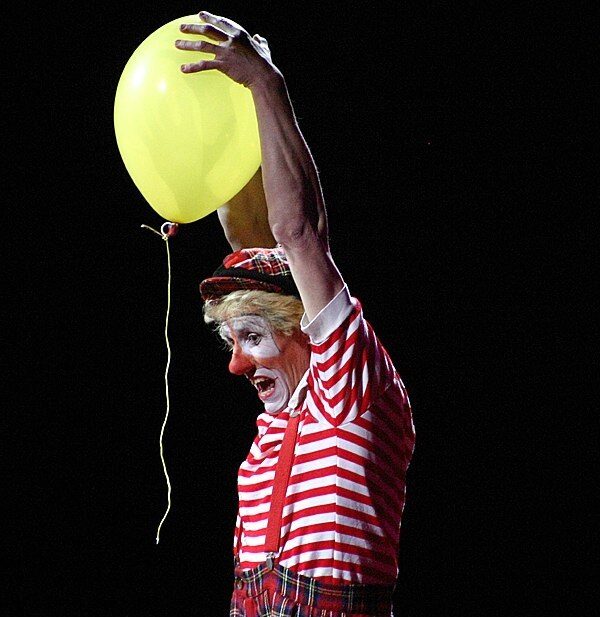
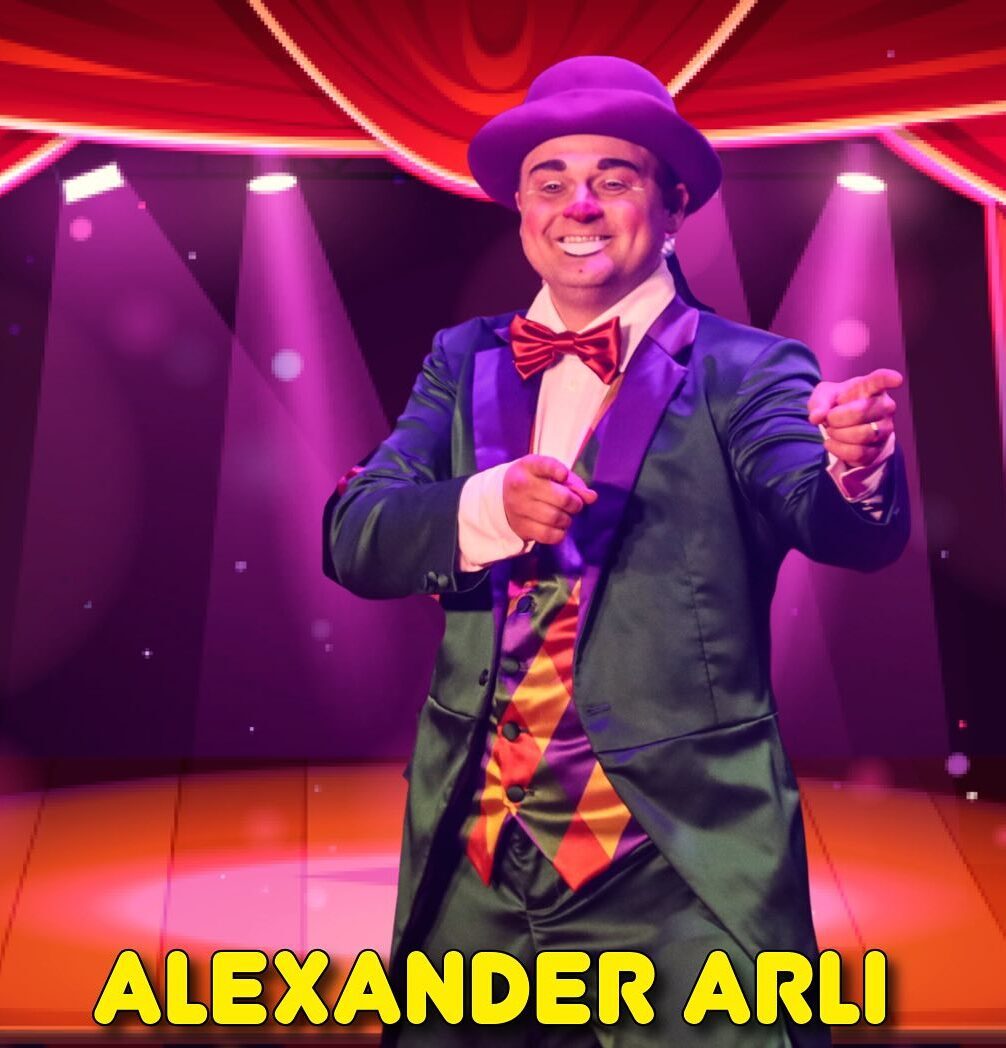
Photo: BonBon the clown / Lasse Nørager (left) - and multi-artist Alexander Arli from Circus Arli
The hospital clown
Clowning has also become an important factor in the healthcare sector: 68 clowns are currently working for Danish Hospital Clowns, which is present in hospitals and other treatment centres for children throughout Denmark. Clowning is used to create an open, welcoming space around sick children and their families, making it a little easier to be a patient and overcome pain and uncertainty.
Read more about Danske Hospitalsklovne's definition of clown professionalism here
"Hospitals are very active, and clowns are well prepared for the task through the hospital clown training programme. The job requires the clown to be present in the meeting with the patient and not come with a fixed performative template.
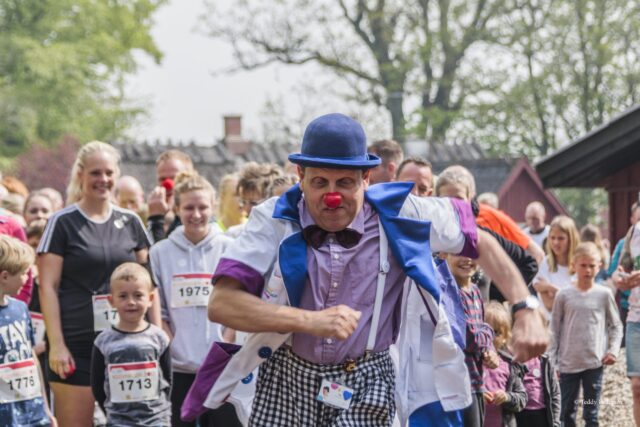
Photo: Danish Hospital Clowns
The hospital clowns fulfil an important task, as do the care clowns, whose work is not as well known," says Mikkel Knudsen. Many of the care and hospital clowns originate from The Commedia School in Copenhagen. The school works from the practices of Carlo Mazzone-Clementi, Jacques Lecoq and Moshe Feldenkrais, and encourages its students to engage in social change issues, for example by bringing the clown character to nursing homes and dementia patients, as care clowns typically do.
Is there a clown hidden in standup?
Modern standup is a far cry from the classic, often wordless and sometimes poetic clown character, but has a common denominator in the even older jester character, who is characterised by telling the unpleasant truth - preferably in a funny way.
You can recognise this clock function in a contemporary version in Casper Christensen and Frank Hvam's TV series (2005-2022) and film Clown, (2010-2020), who cultivate the status drop that the truth provokes, whether you fall on your tail physically or commit a social faux-pas.
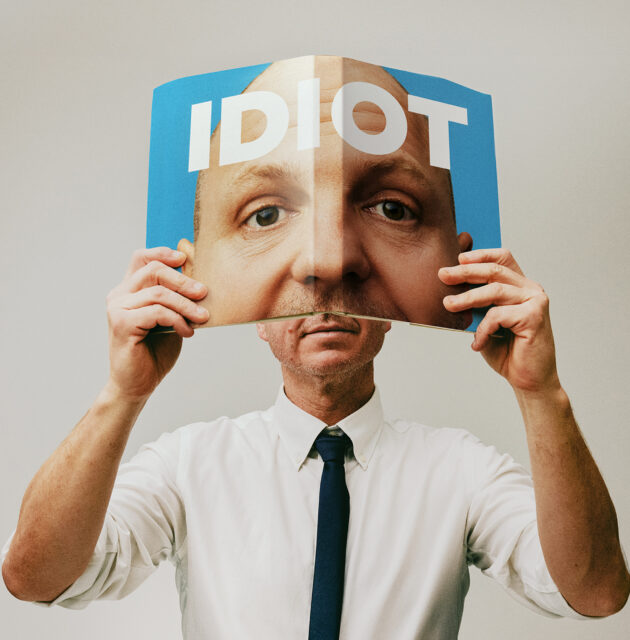
Rune Klan, stand-up comedian and entertainer
You can also find clown characteristics in a stand-up like Rune Klan, who combines comedy with magic to create a poetic universe with a conscious aim to "touch", as he defined it in an interview on Heartbeatsor in the physical expressions of artists like Thomas Warburg and Simon Talbot. But while stand-ups typically work with very concrete and contemporary themes such as fertility and fatherhood, the classic clown character takes a more naive and physical approach to existential themes.
"Clowning has proven to be long-lasting over many centuries, and time and time again we see how the clown character is redemptive and a fundamentally important form of expression that people need to be able to mirror themselves in. We need to be able to laugh and cry along with the clown and his/her indomitable fight to succeed," says Mikkel Knudsen.
Series of articles about artists specialising in the circus genres
During 2025, the Danish Artist Association will be highlighting artists in the circus genres. In a series of articles, you can follow the artistic expressions that artists such as clowns, entertainers, magicians, acrobats, aerial artists or jugglers bring to the Danish stages.
Text: Freelance journalist Anne Liisberg

